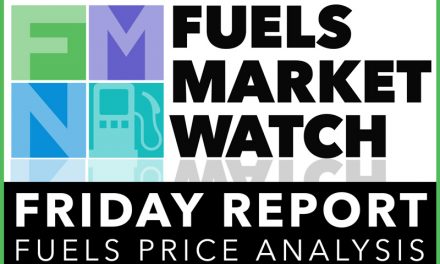The EIA’s latest Short-Term Energy Outlook continues to note the impact this winter’s cold weather is having on a range of heating fuel prices. Highlights:
- Temperatures east of the Rocky Mountains have been significantly colder this winter (October-February) compared with the same period both last winter and the average for the past 10 years, straining distribution networks and putting upward pressure on consumption and prices of fuels used for space heating. U.S. average heating degree days were 13% higher than last winter (indicating colder weather) and 10% above the October through February 10-year average. The Northeast was 13% colder than last winter, the Midwest and South both 19% colder, while the West was 5% warmer.
- The cold weather this winter had the greatest effect on propane prices, particularly for consumers in the Midwest. Cold temperatures have tightened supplies that were already low heading into the winter heating season. Residential propane prices in the Midwest rose from an average of $2.08 per gallon (gal) on December 2, 2013, to $4.20/gal on January 27; prices have since fallen back to $2.78/gal as of March 3. EIA now expects that propane prices in the Midwest will average $2.62/gal over the winter (51% higher than last winter) while those in the Northeast will average $3.47/gal (15% higher than last winter).
- Cold temperatures have continued to tighten heating oil supplies and helped drive up retail prices. Since the beginning of the year, distillate inventories in the Northeast (Petroleum Administration for Defense Districts 1A and 1B) have fallen by almost 6.9 million barrels to reach 18.3 million barrels on February 28, 6.4 million barrels below inventory levels for the same week in 2013. Weekly U.S. residential heating oil prices increased by $0.20/gal during January and have averaged near $4.24/gal since the beginning of February. Despite the recent increases, EIA expects that U.S. heating oil prices will average $3.83/gal this winter, $0.04/gal (1%) lower than during last year’s winter heating season, mainly because of lower crude oil prices.
- The North Sea Brent crude oil spot price in February averaged near $110/barrel (bbl) for the eighth consecutive month, while West Texas Intermediate (WTI) crude oil prices increased by $6/bbl from the previous month to reach $101/bbl. Continued high refinery runs helped reduce inventories at the Cushing, Oklahoma, storage hub to 32 million barrels, the lowest level since February 2012, and helped strengthen WTI prices. The discount of WTI crude oil to Brent crude oil, which averaged more than $13/bbl from November through January, fell to $8/bbl in February. EIA expects the WTI discount to average $10/bbl in 2014 and $11/bbl in 2015.
- Cold weather also contributed to continuing large withdrawals of natural gas from storage and a surge in natural gas spot prices, which hit record levels in several markets during periods of extreme cold. Natural gas working inventories on February 28 totaled 1.20 trillion cubic feet (Tcf), 0.91 Tcf (43%) below the level at the same time a year ago and 0.76 Tcf (39%) below the five-year average (2009-13). Henry Hub natural gas spot prices were volatile over the past two months, increasing from $3.95 per million British thermal units (MMBtu) on January 10 to a high of $8.15/MMBtu on February 10, before falling back to $4.61/MMBtu on February 27, and then bouncing back up to $7.98/MMBtu on March 4. EIA expects that the Henry Hub natural gas spot price, which averaged $3.73/MMBtu in 2013, will average $4.44/MMBtu in 2014, an increase of $0.28/MMBtu from the 2014 projection in last month’s STEO. Residential natural gas prices are expected to average $10.05 per thousand cubic feet (Mcf) this winter, an increase of $0.30/Mcf (3%) from last winter.
Additional price information:














